tvlawyer,
While I didn't think my hatch was that hard to build, trying to figure out how to build it was perplexing. I think I have an idea of what you are wrestling with but please note that I have not seen the cubby plans.
The first thing to discuss is what type of hinge you are using. I believe the cubby plans call for a hurricane hinge that is offset. By offset, I mean that one side of the hinge is higher than another causing the roof/bulkhead to be on a different plane than the hatch. It is my thought that the reason the plans call for adding the 3/8" is to accomodate the offset hinge. In this situation, the top of the hatch would sit 3/8" higher than the top of the roof and the sidewall profile. The offset would leave room for weatherstripping underneath the hatch and sidewall profile.
You can also get a hurricane hinge that is not offset. That is the type I used. It looks like my chicken-scrattching sketch below.
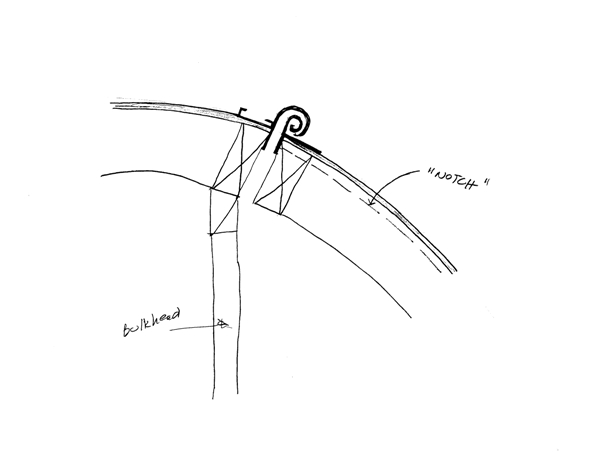
If you use a hinge that is not offset, there is no need to add the 3/8" to gussets or hatch framing. The area for the weaterstripping is accomodated by notching the sidewalls. I believe you said that you already did that. The gussets or hatch framing would then follow the profile of the sidewalls before notching.
With either type of hinge, the hatch framing sits higher than the sidewall. It looks something like this in cross-section:
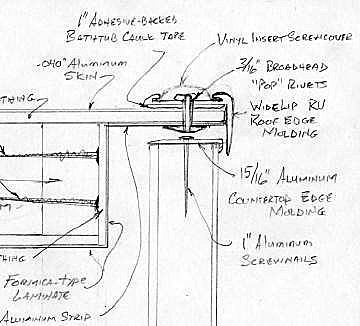
As far as how deep to make the gussets or hatch framing, I think 1-1/4" is a little light. I made my hatch framing 1-1/2" deep out of 3/4" ply. The outer two were doubled with two additional singular-width gussets in the middle.
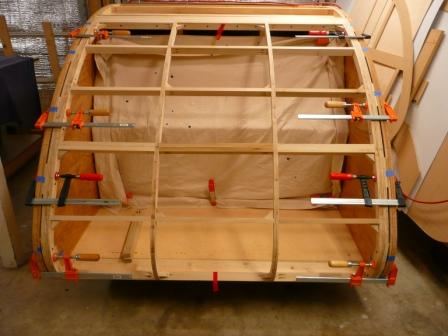
As it turned out, everything was okay and I did not have springback, but there is a little more flex or twist than I like.
I do think that it is important to frame your hatch in place. Even with careful layout and installation of the sidewalls, floor and bulkhead, I ended with some "variances" in dimensions and being square. Framing in place allowed (using spacers) allowed me to cut my hatch framing to fit the opening.
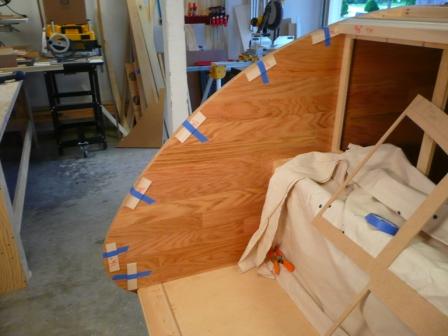
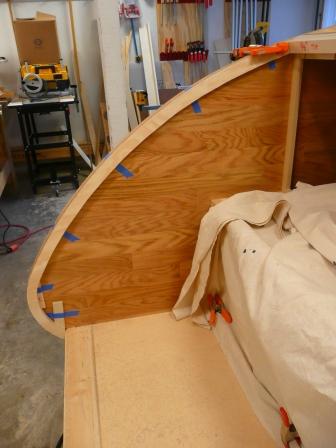
Also, if possible, I think it is better to skin the hatch with the hatch framing in place.
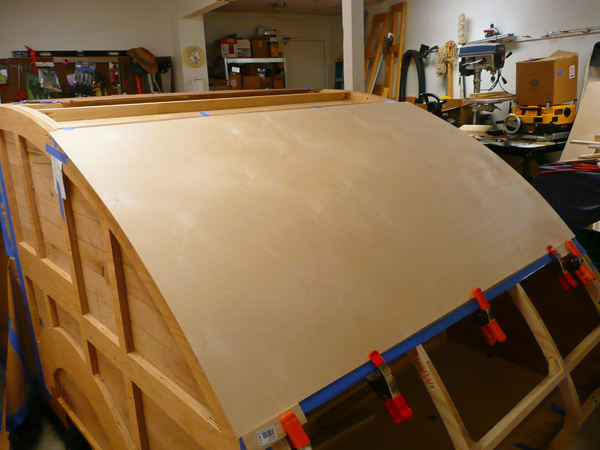
My bulkhead was not solid at this point in construction, so I just ran some temporary screws through the hatch framing into the sidewalls. I then attached the plywood skin. The plywood was "run wild" past the sidewalls. Later, after the glue was set, I trimmed the plywood to the sidewalls. I left the hatch in place and didn't remove the temporary screws until I was ready to attach the hinge. Please note that up until this point I had not notched my sidewalls. I did this when I had the hatch off to install the hinge.
Hope this helps,
Tom



 .
.